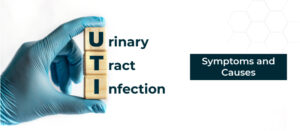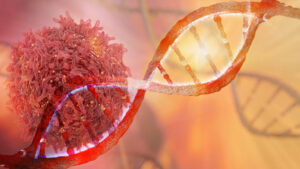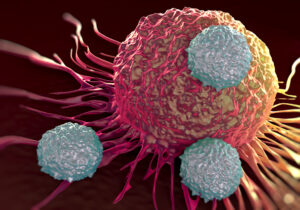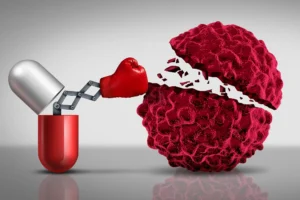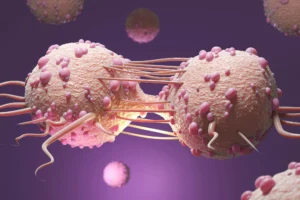Breast Cysts and Its Understanding:
Breast health is of prime concern to women, and knowing the difference between a breast cyst and breast cancer can well alleviate their fears and help them seek timely medical attention.
What is a Breast Cysts?
Cysts in the breasts are sacs that contain fluids and can be round or oval. They are familiar to women between 30 and 50 years of age. They may also be felt as lumps; usually, they are tender to the touch or painful. It is especially so a few days before the onset of menstrual bleeding.
Most cysts are tiny and might resolve on their own. Further confirmation of the presence of a cyst and ruling out any chances of a malignant state can be carried out through ultrasound or fine-needle aspiration. Nevertheless, one should never take changes to the breast lightly; instead, one should seek medical evaluation without delay.
Understanding about Breast Cancer:
On the other hand, breast cancer is life-threatening and can be defined as the uncontrolled growth of abnormal cells in breast tissue. Breast cancer can, of course, also manifest as a lump, but this will be firm or irregular, and unlike cysts, cancerous lumps are often fixed. They may be associated with skin retraction of the nipple or discharge from the nipple. Early, in the life of this disease, there may be no pain at all. Early detection using regular breast self-examination, clinical examination, and mammography tests greatly enhances breast cancer treatment results.
Common Difference Between Cysts and Cancer
Differentiation of breast cancer from breast cysts is possible only with detailed examination and diagnostic investigation. They will consider the age, medical history, and characteristics of the lump in the breast. Mammography, ultrasound, and, if necessary, magnetic resonance imaging (MRI) help to detail the nature of the breast abnormality. Sometimes, it may be required to take a biopsy to get a tissue sample, which is then tested microscopically to arrive at a final, definite breast cancer diagnosis.
One needs to know the difference between breast cysts and breast cancer so that one can take better action over one’s breast health. It is not to say that the diagnosis of breast cysts is necessarily alarmist, for, in fact, most of these indeed are benign and generally don’t require treatment unless they are symptomatic. In general, it is regular screens and keeping an eye on the health of the breasts that are influential mainstays in the excellent management of breast cancer, with new and concerning changes being brought to the attention of a healthcare provider.
How to Prevent Breast Cysts?
Finally, it may be said that both breast cysts and breast cancer may look similar in their presentation, but really, they differ in base nature and health implications. This is a chance for everyone to stay alert and take steps for necessary, timely medical attention by making routine breast care valuable and eliminating potential concerns.
It differentiates a breast cyst from breast cancer by:
Breast Cysts:
- Nature: Fluid-filled sacs of soft-tissue characteristic to women aged 30-50.
- Texture: Smooth, rounded, and generally mobile.
- Symptoms: Tenderness or pain often before the menstrual period.
- Changes: Occurs in various sizes and disappears spontaneously.
- Diagnostic Tools: Ultrasound and fine-needle aspiration can give evidence of the cysts.
- Treatment: Often benign and may not require treatment unless symptomatic.
Breast Cancer:
- Nature: Uncontrolled growth of abnormal cells in breast tissue.
- Texture: Either firm or irregular lumps, fixed.
- Symptoms: Lumps with dimpling of the skin, retraction of the nipple, or discharge.
- Pain: Early stages may be unnoticed.
- Diagnostic Tools: Among these are mammography, ultrasound, and MRI.
- Treatment: The comprehensive management includes surgical removal, chemotherapy, or radiation.
Distinguishing Factors: Breast Cysts vs. Breast Cancer:
- Age: Most women with breast cysts are between the ages of 30 and 40, but breast cancer can occur at any age.
- Texture and Mobility: Cysts are generally smooth and mobile and may change with the menstrual cycle. Cancerous lumps are most often firm, irregular, and fixed.
- Associated Symptoms: In the case of the associated symptom, skin changes, nipple abnormalities, or discharge are associated symptoms of breast cancer and very rarely appear in cysts.
- Pain: In the case of a breast cyst, painfulness to the touch or pain in the affected area is possible, while this is not characteristic of breast cancer at an early stage.
- Diagnostic Tests: Imaging approaches like mammography, ultrasonography, and MRI, with the help of biopsy, are required to identify and differentiate effectively.
Conclusion:
It is, however, always crucial to differentiate between breast cysts and cancer by knowing these various factors, and when one is suspected, then seek the medical evaluation without delay. Early detection still holds a very pertinent place for effective management and good outcomes in the conditions.



